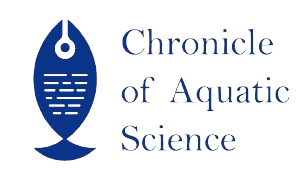| File | Action |
|---|---|
| CoAS_V1IS3_04 | Download |
- 919088951040 call us
- chronicleofaquaticscience@gmail.com Mail us
CoAS_V1IS3_04
Popular Article
Genetically Modified Organisms (GMOs) in Aquaculture: Advantages, Risk Factors and Future Perspectives
Kinjalkumari J. Patel* and Ketan V. Tank
Abstract
Aquaculture across a wide range of species has a lot of potential for improvement with the production of suitable genetically modified organisms (GMOs). "Transgenic" or "genetically modified organism" (GMO) refers to an organism that has a foreign or modified gene incorporated into its genome utilizing in vitro genetic procedures. As a result of biotechnological research, genetically enhanced plants and animal breeds have been created in the last two to three decades, constantly increasing production and product quality. Due to a lack of progress in aquaculture biotechnology research, this has not occurred in the aquaculture industry. Fish stocks that have undergone genetic improvement account for less than 1% of global fish production. However, it is inevitable that commercial production of aquatic GMOs will not take long to come given the urge driving to major aquaplosion in nations like China. (Beardmore and Porte, 2003).
Keywords
GMOs, aquaculture, fish growth, Transgenic
References
Beardmore, J.A.; Porter, J.S. Genetically modified organisms and aquaculture. FAO Fisheries Circular. No. 989. Rome, FAO. 2003. 38p.
Chatakondi, N., Lovell, R.T., Duncan, P.L., Hayat, M., Chen, T.T., Powers, D.A., Weete, J.D., Cummins, K. & Dunham, R.A, 1995. Body composition of transgenic common carp, Cyprinus carpio, containing rainbow trout growth hormone gene. Aquaculture, 138: 99-109.
Chen, J.D., Tsay, T.T., Lai, S.Y. & Liao, I.C. 1997. Generation of fast-growing tilapia (Oreochromis niloticus) by the application of yellowfin porgy growth hormone transgene which is driven by JAK1 promoter. Journal of the Fisheries Society of Taiwan, 24: 313- 325.
Dunham, R.A., 1999. Utilization of transgenic fish in developing countries: Potential benefits and risks. Journal of the World Aquaculture Society, 30: 1.
Erdelyi, F., Papp, T., Mueller, F., Adam, A., Egedi, S., Stetak, A. & Orban, L. 1994. Production of transgenic catfish and carp by coinjecting a reporter gene with growth hormone gene. In 3rd International Marine Biotechnology Conference: Program, Abstracts and List of Participants. 1-71.
Hackett, P.B., Caldovic, L., Izsvak, Z., Iviks, Z., Fahrenkrug, S., Kaufman, C., Martinez, G. & Essner, J.E. 1994. Vectors with position-independent expression and enhanced transfer for production of transgenic fish. 3rd International Marine Biotechnology Conference: Program, Abstracts and List of Participants. 1-73.
Martinez, R., Estrada, M.P., Berlanga, J., Guillen, I., Hernandez, O., Pimentel, R., Morales, R., Herrera, F. & de la Fuente, J. 1996. Growth enhancement in transgenic tilapia by ectopic expression of tilapia growth hormone. Molecular Marine Biology and Biotechnology, 5: 62-70.
Maclean, N. & Talwar, S. 1984. Injection of cloned genes with rainbow trout eggs. Journ. Embryol and Exp. Morphol. 82 (Supp) 187.
Melamed, P., Gong, Z.Y., Fletcher, G.L. & Hew, C.L. 2002. The potential impact of modern biotechnology on fish aquaculture. Aquaculture, 204: 255- 269.
Stein, H., 1993. Biotechnology, Aquaculture and Ecology. Wiener Tierarztliche Monatsschrift, 80: 384.
Stevens, E.D., Sutterlin, A. & Cook, T. 1998. Respiratory metabolism and swimming performance in growth hormone transgenic Atlantic salmon. Canadian Journal of Fisheries and Aquatic Science, 55: 2028-2035.
Sulaiman, Z.H. 1998 Transgene expression in seabasss (Lates calcarifer) following muscular injection of plasmid DNA: a strategy for vaccine development? Naga 21: 16-18.
Palmiter, R.D., Brinster, R.L. & Hammer, R.E. 1982. Dramatic growth of mice that develop from eggs microinjected with metallothionein-growth hormone fusion genes. Nature, 300: 611-615
Tsai, H.J., Tseng, T.S. & Liao, I.C. 1995. Electroporation of sperm to introduce foreign DNA into the genome of loach (Misgurnus anguillicaudatus). Canadian Journal of Fisheries and Aquatic Science, 52: 776-787.
Zhu, Z.Y., Li, G., He, L. & Chen, S. 1985. Novel gene transfer into the fertilized eggs of the goldfish Carassius acuratus L. 1758. Journ. Appl. Ichthyol. 1: 31- 34.
- Published online
- 30th August, 2023
How to Cite the Article
Patel, K. J. and Tank, K. V. (2023). Genetically Modified Organisms (GMOs) in Aquaculture: Advantages, Risk Factors and Future Perspectives. Chronicle of Aquatic Science 1(3):23-27
Copyright
This is an open-access article distributed under the terms of the Creative Commons Attribution License (CC BY). The use, distribution or reproduction in other forums is permitted, provided the original author(s) and the copyright owner(s) are credited and that the original publication in this journal is cited, in accordance with accepted academic practice. No use, distribution or reproduction is permitted which does not comply with these terms.

CoAS_V1IS3_04


